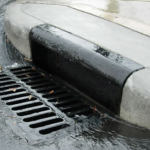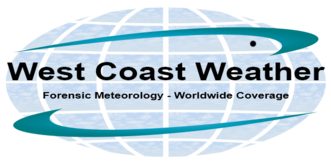Stormwater Testing: Timing the Rain Events
By Michael FaginUncategorizedWith 0 commentsStormwater testing: timing the rain events is the solution for successful missions vs. expensive, wasted opportunities. Big trouble with simply looking at the latest automated forecast is that precipitation timings and amounts are the least accurate of forecast models. Better estimates are made, given a longer-term look at how models have progressed by a seasoned professional with insider knowledge regarding the weaknesses and strengths of forecasting tools.
State quotas demand timely stormwater testing but missed events yield costly personnel billing and the usage of equipment that can’t be redeployed after wettened. For many stormwater seasons, we at West Coast Weather have worked with both mild/wet and cold/wet climates.

Tough Decisions during Stormwater Season in Western Washington
The mild and wet fall-to-spring climate in Seattle is complicated, especially when trying to judge when, where and how much precipitation will fall, despite the availability of 2019-quality free forecasts. Many stormwater-generating scenarios are possible during stormwater season. This is a common one over western Washington, best handled by consulting us at West Coast Weather first.
A stormwater specialist is required to sample once a calendar quarter for the State, which describes the “first fall storm event as the first time after Oct. 1st that precipitation occurs and results in a stormwater discharge from the facility.” The test area is just south of downtown Seattle, which at times is in a rain shadow. It’s Monday morning and the local weather forecast is predicting 0.50” of rain in a 3-hr period – a condition that would produce plentiful stormwater discharge.
Contrary to the local models, some national models and international models are suggesting closer to 0.05” will fall Tuesday morning, as noticed by us here at our weather center. Skipping calling us, the stormwater specialist decides to prepare Monday afternoon for a rain event Tuesday morning. The specialist summons his crew and they go on-site, ready to test.
True to form for the region, a rain shadow manifests over downtown Seattle and just south. Tuesday morning sees about 0.05” of rain, while a Convergence Zone sets up north of Seattle as far as Everett, which sees 0.55”. The net result: 16+ lost man hours and wasted equipment. Losses could have easily been avoided given a mind-changing second opinion from a professional meteorological consultant, emailed in an update.
The Snowy Midwest Meets Unexpected Southerlies
Cleveland has a cold and wet fall-to-spring climate, for which we’ve forecast for years. Here is a scenario common to the snowy Midwest:
It’s Dec. 1 and a stormwater test is due soon. 6” of snow is presently on the ground. Ample discharge will occur if a strong warm front moves in, leading to heavy rain.
A forecast on Monday from local sources predicted: one, Tuesday’s temperatures will quickly warm up to 50°F by 8:00 AM; two, 0.50” of rain should be expected Tuesday morning. Simultaneously, a national forecast called for a rain-snow-freezing mix Tuesday with less moisture and temperatures only 3°F above freezing, potentially producing at best a mild stormwater discharge. The facility’s stormwater specialist decides to not test because it seems like conditions will remain too cold to bother.
Late Monday night, temperatures began to rise quickly, despite the sun having already been down, due to strong southerlies. It’s now Tuesday morning. Moderate-to-heavy rain has moved in, triggering a key stormwater sampling event.
The miss has left the client awaiting the test results upset. Given advice from a professional meteorologist, whom the facility’s specialist could have called Monday or chatted with via text/email, the incoming weather threat would have been consistently monitored, assessed and reported.
Written by Meteorologist Geoff Linsley
